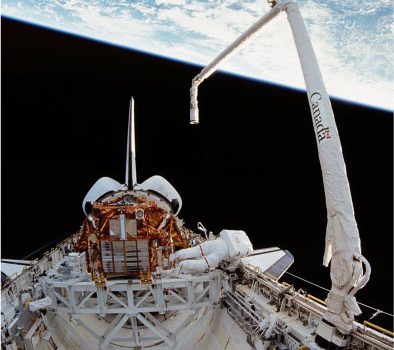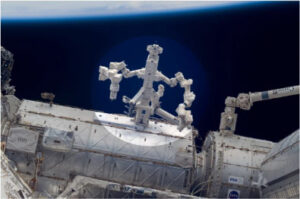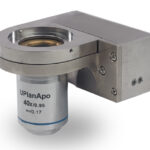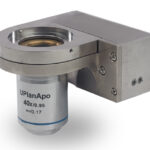
Space challenges
Over the decades, Queensgate Instruments has undertaken various one-off space-borne projects as subcontractor and in collaboration with companies working for NASA and ESA. These included precision capacitance micrometers used in the “force moment sensor”, part of the robot-arm mechanisms used on the International Space Station and the Space Shuttle.The capacitive sensing systems were used to monitor strains in the robotic system and prevent overstressing of the components. In addition, various piezo- actuated pointing mechanisms have been incorporated into various satellites.
Operating in space presents challenges. The systems produced were validated with the client over a two-year period and space-grade components were used. The space-station sensor electronics developed are sited in an environmentally controlled environment and operated in air, while the sensors are operated in a vacuum. The electronics and sensor designs were developed as bespoke solutions, the space-grade electronics were subcontracted to a space-qualified electronics manufacturer, and the full systems were calibrated in the Queensgate testing laboratory.
Capacitive micrometry
Queensgate pioneered the use of capacitive micrometry in nanopositioning. The capacitive sensors give precise positional feedback, delivering high resolution/low noise and high linearity of movement, with positional repeatability of less than 1 nms.
NX/NZ/NC NanoSensors®
The NanoSensor® is a non-contact measuring system based on the principle of capacitance micrometry to enable highly accurate displacement measurement.
Two nanosensor plates (probe and target) are mounted facing each other; the probe is secured to a fixed reference and targeted to the moving part. The spacing of these two plates can be measured to better than 0.1nm resolution and with linearity of up to 0.02%.
They are available for ranges from 20 μm to 15 mm, in a variety of materials including aluminium, super invar, gold on zerodur and gold-coated alumina.
Nanopositioning stages
Queensgate’s high-performance precise- positioning systems are piezo-driven, flexure-guided stages with integrated capacitance position sensors incorporated into a single system. They offer sub-nanometre resolution, repeatability and positional stability, and are often the choice for applications in environments where there is UHV, radiation or magnetic fields.
Beam-steering mechanisms
- Tip mechanisms – these offer a single axis of rotation with the highest operational bandwidth and nanoradian levels of resolution.
- Tip-tilt mechanisms – these offer two axis of rotation with nanoradian levels of resolution.
- Rotation – these are a single-axis system where the axis of ratio is perpendicular to the stage platform. They are ideal for rotation prisms or side-mounted mirrors. The axis of rotation can be aligned to pass through the reflective face with this type of stage.
DPT-D and DPT-E actuators
The DPT-D and DPT-E range of actuators are designed with capacitive feedback control to give precise positioning. They are capable of moving loads of up to 60g over the full travel range, with low electronic noise and high linearity. This gives confidence that the actuator is positioned with precision, speed and accuracy. High-thermal-stability super- invar construction gives superior position stability.
By encouraging engineering partnerships, Queensgate Instruments works to deliver the best solution, delivering performance at the right price. We offer comprehensive service and support, and consistently achieve the best performance for the price.
If you have a positioning application where you require a nanopositioning solution, please contact us.
Examples of Queensgate space collaborations
Mobile Servicing System (MSS) or Canadarm 2
A robotic system on the International Space Station (ISS)
- Launched to the ISS in 2001
- Supports astronauts working in space, instruments and other payloads attached to the ISS by moving equipment and supplies around the station
MSS is composed of:
- Arm – Space Station Remote Manipulator System (SSRMS)
- Mobile Remote Servicer Base System (MBS)
- Special Purpose Dexterous Manipulator (SPDM, Dextre or Canada hand)
Canadarm 2 uses same Queensgate 300 channel capacitive sensing system, as the previous Canadarm 1 update.
Dextre – Special Purpose Dexterous Manipulator (SPDM)
Dextre – Two armed robot on International Space Station (ISS)
- Capable of doing repairs otherwise requiring spacewalks
- Launched March 11, 2008 on mission STS-123.
Queensgate Instruments produced 50 channel capacitive sensing system to monitor strains in the robotic system; to prevent overstressing of the components.
(Image copyrights acknowledged where applicable)









